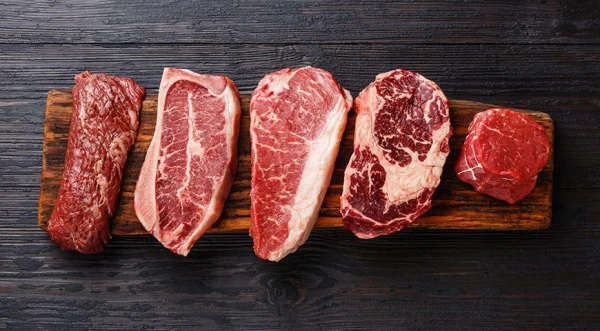
If you look at culinary websites or bloggers' pages on social media, you will find steaks made from pork, turkey, chicken, and even, for example, cauliflower. Currently, this term refers to quite large pieces of almost any product, pan-fried or baked in the oven. However, if you decide to order a steak in a restaurant without delving into the menu, the waiter will ask you several standard questions about the chosen type and degree of doneness. This allows us to conclude that this term traditionally refers to a beef dish.
The meat for steaks differs in the amount of intramuscular fat, known as "marbling." The more fat, the juicier the steaks become. There are many varieties, all related to the choice of cut. According to modern classification, classic and alternative steaks are distinguished.
Classic steaks include, for example, the following:
Ribeye. This steak is prepared from the thick end of the back of the bull. It can be bone-in or boneless. This cut contains a lot of fat, which makes ribeye particularly tender and juicy. The ideal degree of doneness for it is medium rare: this way, the flavor of the meat and its aroma are revealed best. It is very simple and quick to cook (only 4–6 minutes).
Striploin (New York steak). This steak is made from the thin tenderloin edge with a strip of fat. This steak has less fat and more dense meat, which complicates the chef's task. If you slightly overcook the steak on the fire, it can become dry and bland. Therefore, it is not recommended to grill it longer than for medium rare.
Filet mignon. This steak is cut from the narrow part and has a cylindrical shape with a thickness of 3–6 cm. It contains little intramuscular fat, but the meat of this cut is so tender that when properly cooked, it literally melts in your mouth. There is also a steak called "Chateaubriand," which is prepared from the thickened part of the tenderloin. Its peculiarity is that the meat is first seared whole on all sides and then finished in the oven.
T-bone. This steak consists of two pieces connected by a T-shaped bone. It can be cut from any part of the carcass: the further from the head, the larger it is. Unlike most steaks, T-bone is cooked for about 15 minutes over medium heat. The main task of the chef is not to overcook the meat, bringing it only to medium.
Alternative steaks are more affordable options that can still rival classic ones in quality.
Alternative steaks include, for example:
Skirt. This steak is also made from the diaphragm, but unlike the machete, it contains larger fibers with good fat layers. Skirt is considered quite challenging to cook, so it is often marinated beforehand for greater tenderness.
Flank steak is cut from the flank. It has few fat layers, so it can turn out a bit dry in its pure form. However, if you marinate it overnight in a mixture of balsamic vinegar (red dry wine), soy sauce, and olive oil, by morning you will have tender meat with a rich flavor.
Top blade. This steak is cut from the outer side of the shoulder and is characterized by tenderness and juiciness. Its only drawback is a strip of connective tissue in the middle that cannot be chewed. What to do with it? Just cut it off with a knife on your plate and enjoy the taste of the meat.
Denver. Another very tender steak, which is cut from the neck of the bull. It does not require special preparation: it is grilled just like any classic steak, seasoned only with salt and pepper.

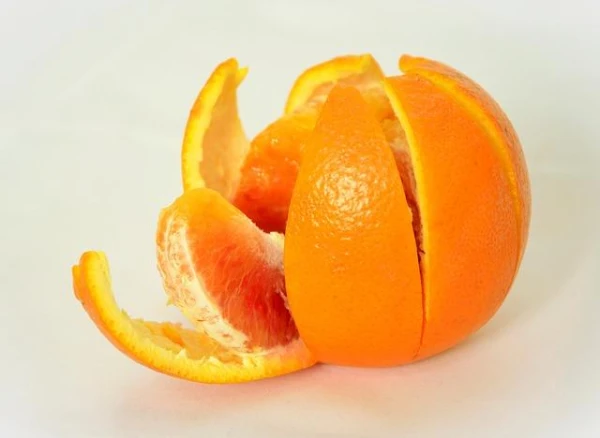


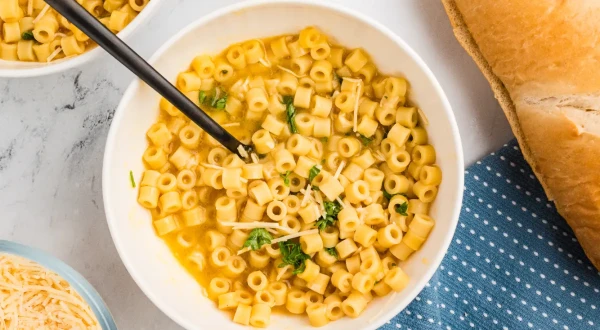


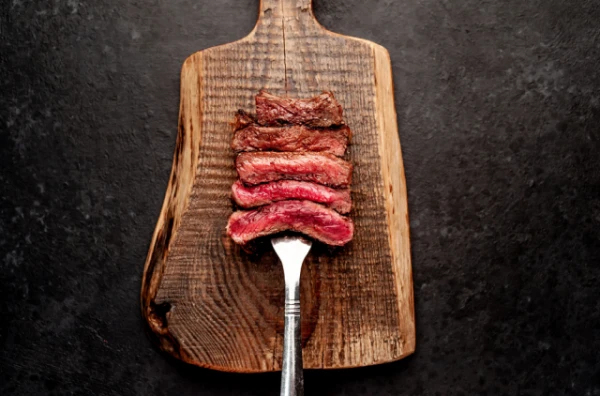



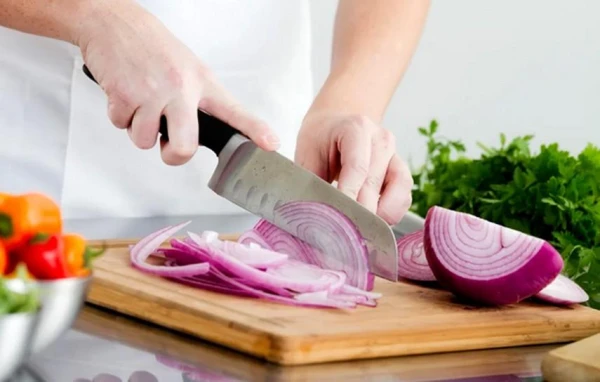



Leave a comment